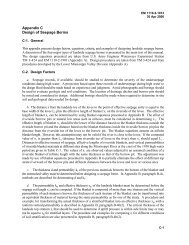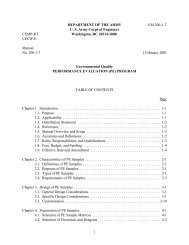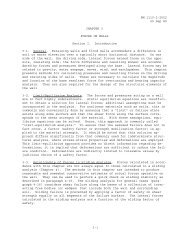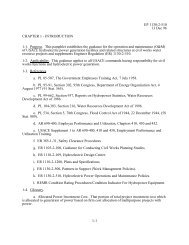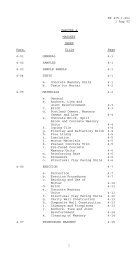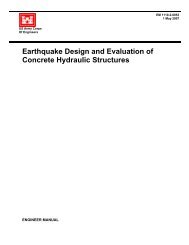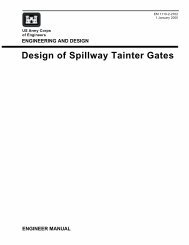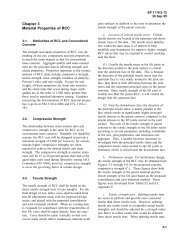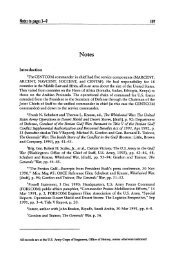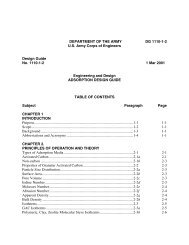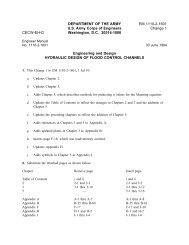Chapter 5 - Publications, US Army Corps of Engineers
Chapter 5 - Publications, US Army Corps of Engineers
Chapter 5 - Publications, US Army Corps of Engineers
Create successful ePaper yourself
Turn your PDF publications into a flip-book with our unique Google optimized e-Paper software.
EM 111O-2-17(.)]<br />
31 Dec 1985<br />
low-head projects, where head varies directly with discharge, an<br />
efficiency versus discharge relationship can be derived (see Section<br />
5-7n).<br />
(5) For projects where head varies independently <strong>of</strong> discharge,<br />
an efficiency versus discharge curve can be used if head does not vary<br />
substantially. Where head does vary substantially, several alternatives<br />
are available. For projects with four or more units, there is<br />
considerable flexibility <strong>of</strong> operation. The number <strong>of</strong> units that are<br />
placed on-line at any given discharge would be selected such that they<br />
would all be operating at or near the point <strong>of</strong> best efficiency for the<br />
given discharge. In these cases, an efficiency versus head curve can<br />
be developed. Figure 5-11 shows an efficiency vs. head curve for a<br />
multiple-unit Francis installation. This curve was developed from the<br />
turbine performance curve shown on Figure 5-8, based on the units<br />
operating at the Pint <strong>of</strong> best efficiency at each head. The<br />
efficiency values from Figure 5-8 were reduced by an additional two<br />
percent to account for generator losses. Where a project is normally<br />
“block loaded” (see Figure 5-10, the plant would always operate at or<br />
NETHEAD (FEET)<br />
Figure 5-11. Net head vs. efficiency curve<br />
for Francis turbine (multiple-unit installation)<br />
5-34




